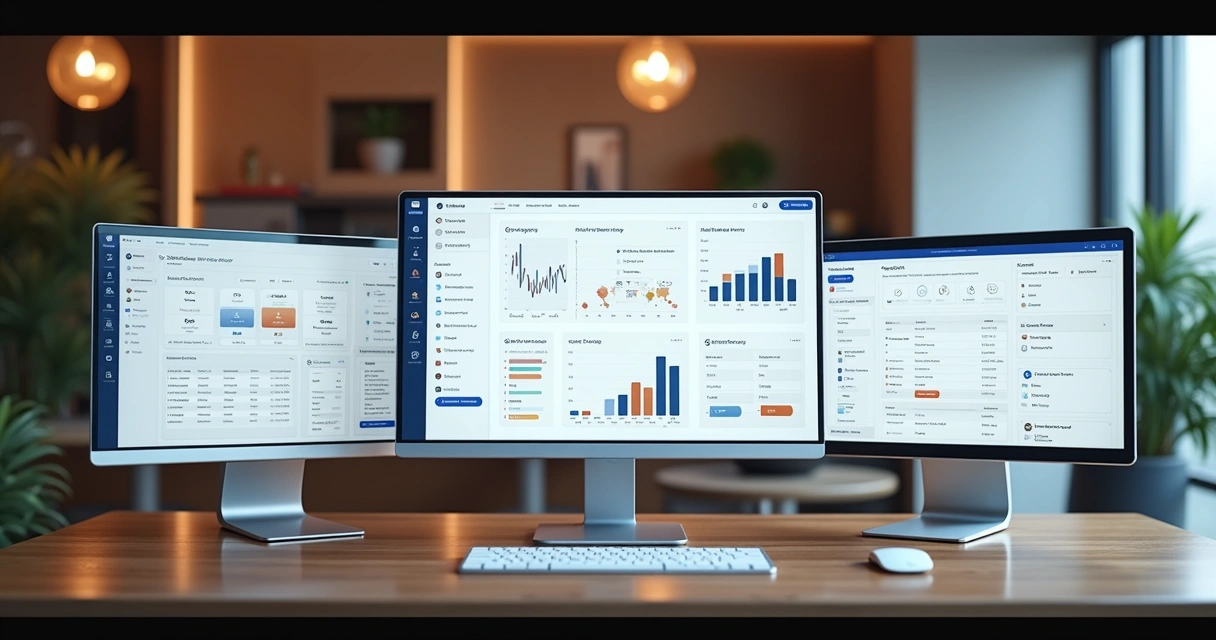The first time I worked on a challenging SaaS project, I was looking for a PHP framework that felt modern, quick to develop with, and ready for cloud deployments. What I discovered in the Laravel community and toolset exceeded everything else I tried. Years later, after building enterprise platforms, e-commerce stores, and integrating artificial intelligence, I am convinced: Laravel stands out for crafting secure, scalable web solutions that can grow with your business.
In this article, I want to explain in straight, practical terms what sets Laravel apart. I'll share my perspective as a senior engineer and digital nomad who’s delivered custom applications for fast-moving startups, established enterprises, and folks who simply want results that last. Along the way, I’ll reference scientific research, industry best practices, and client stories – always with the goal of guiding you closer to a solution that fits your unique context.
The PHP backbone: why Laravel matters
$PHP remains the bedrock of the web. According to a study from Kaunas University of Technology, 81.8% of all web projects use PHP. Laravel is, in my experience, the best way to tap into PHP’s flexibility with modern structure, speed, and safety. Unlike older platforms, Laravel was designed to smooth over the rough edges—bringing the Model-View-Controller (MVC) pattern, expressive syntax, and an ecosystem of tools for today’s businesses.
Speed. Safety. Predictability.
Competitors like Symfony and CodeIgniter certainly have strengths. Still, whenever a client asks for a rapid build with future-proofing—especially for SaaS or e-commerce—I always recommend Laravel because its community, packages, and support make upgrades and scaling much less risky. In fact, many clients have moved from other PHP frameworks to Laravel after hitting limits with code maintenance or deployment options.
Framework architecture: code that grows with your business
The Model-View-Controller (MVC) approach is baked into Laravel. This matters because it keeps business logic, database access, and user interface separate. Let me explain through a quick example from one project:
- Our client, a fast-growing e-learning platform, needed to add custom AI-powered reporting.
- Because the logic, database, and front-end presentation were in their own domains, I was able to update the data layer (an Eloquent Model), add a new reporting Service, and build a Vue.js component for the dashboard—without risking regressions elsewhere.
With other frameworks or custom code, those changes often force rewrites across the board. MVC means faster, safer updates as your team grows or your ambitions shift. If you want a deeper look at why MVC makes business sense, I recommend reviewing Laravel’s MVC structure outlined by the University of Florida.
 Another factor that really shines for me: Laravel’s architecture encourages testability from day one. Built-in tools for automated testing and database migrations allow me to safely push changes and know, with far more certainty, that nothing else will break when new features go live.
Another factor that really shines for me: Laravel’s architecture encourages testability from day one. Built-in tools for automated testing and database migrations allow me to safely push changes and know, with far more certainty, that nothing else will break when new features go live.
The developer experience: getting it right the first time
If you compare frameworks like Laravel to alternatives (such as Django with Python or .NET’s ASP.NET), the first thing developers—and eventually clients—notice is how frictionless the process feels. Part of this is Laravel’s focus on an expressive, human-readable syntax. But more than that, the entire onboarding is smooth: from authentication scaffolding to RESTful APIs, job queues, and notifications.
A developer who enjoys their tools usually writes better software.
I have on several occasions coached teams through the shift from a legacy stack to Laravel. In almost every instance, productivity and code quality improved within weeks. The impact on morale is real—it speeds up iteration, reduces frustration, and keeps teams motivated. In surveys often shared within my network and backed up by the University of Florida’s overview on PHP frameworks, Laravel is consistently rated as one of the most developer-friendly environments available.
Database migrations and best practices
One of the pain points I see frequently in projects is messy, inconsistent database changes. Laravel’s migration system is a game changer.
In my client work, version-controlled migrations mean:
- Databases for development, staging, and production are always in sync.
- Rollbacks can be done in seconds if a schema needs to be reverted.
- The onboarding process for new developers is faster—run a command, and their database matches production.
Using Laravel for migrations greatly reduces headaches during expansion, server moves, or international rollout. For example, in a SaaS platform I worked on, this system allowed us to expand from one database to ten—handling different regions—without downtime. In my view, this kind of predictability is a huge reason more enterprises are sticking with Laravel. It’s not just about how quickly you deploy, but also how safely you adapt when business needs shift.
In my view, this kind of predictability is a huge reason more enterprises are sticking with Laravel. It’s not just about how quickly you deploy, but also how safely you adapt when business needs shift.
Modern application security with Laravel
I often hear worries from decision-makers about PHP’s security reputation. With Laravel, these concerns are addressed head-on:
- Cross-site scripting (XSS) and SQL injection are tackled at the core. Input is always sanitized.
- Password storage uses strong bcrypt hashing by default.
- The authentication system provides two-factor options and API token strategies out of the box.
- New vulnerabilities are quickly patched by a large and active developer base.
In reference to Laravel upgrade policies at Miami University, it’s clear that regular updates and strong security policies are now standard, even in mission-critical environments.
Laravel takes the anxiety out of shipping secure features.
For my clients, this means peace of mind. Budget requirements and business agility are always important—but so is customer trust. Laravel meets these needs, and with my expertise, these security benefits are put into your project from the start.
Automated testing: faster launches, less stress
I remember a project where we deployed without automated tests. Two bugs appeared in production within a week, causing lost revenue. That changed my approach forever.
- Laravel makes it simple to write solid unit and integration tests.
- Continuous integration tools like GitHub Actions or GitLab pipelines can run those tests on every commit.
- This means fast feedback. Bugs and regressions are caught before clients or users ever notice.
The best part for clients? Features arrive faster, with less downtime during upgrades or launches. Product owners no longer worry about “what might break.” Instead, they see what works.

Why Laravel outpaces other frameworks for rapid deployment
Now, I have worked with Django, Express.js, and ASP.NET. I respect them, and depending on the situation, they have value. But when speed is the factor, and PHP is in play, Laravel simply runs circles around the rest. I’ll explain why:
- Artisan CLI: Automate repetitive tasks like migrations, queues, and deployments in seconds.
- Pre-built modules: Authentication, payments, and APIs can be scaffolded almost instantly.
- Massive ecosystem: Laravel Nova for admin panels, Horizon for queues, Dusk for browser testing—each saves hours compared to hand-rolling.
Laravel doesn’t force you to choose between rapid delivery and code quality. This is reflected in books like Laravel Up and Running at the University of Wisconsin–Madison, which highlight how even complex solutions stay straightforward to prototype and launch over time.If you’re running a startup or scaling a SaaS platform, this means getting to market quickly — then refining as your audience and needs evolve. I make sure every solution is ready for safe but rapid rollouts so you can respond to real-world shifts.
Custom web applications: flexibility without limits
Clients often ask, “Can you integrate AI, custom APIs, or advanced dashboards with this?” With Laravel, the answer is almost always yes. Here’s what I see as massive advantages:
- You can connect easily to external APIs, microservices, or third-party services. For a breakdown on how this works in practice, I share examples on API integration with modern systems on my site.
- Building SPA (single-page applications) with Vue.js or React.js is a common pattern. Laravel handles the backend, while your chosen JavaScript framework delivers a seamless user experience.
- Integrating cloud storage, messaging, and AI services is a natural fit. Whether AWS, Google Cloud, or private infrastructure, it's just a package and a configuration step away.
Laravel adapts to your imagination.
For a large media company, I built a solution using Laravel as the API backend and React.js for the admin dashboard. The system ingested video, triggered AI-based tagging, and delivered dynamic content to millions of users—while remaining maintainable and ready for new features.
Integrating cloud tools and scaling up
Modern businesses can’t settle for slow, unreliable scaling. With Laravel, my clients benefit from:
- Built-in support for AWS S3, Redis, and queue workers—ideal for handling big spikes in traffic.
- Container-based deployment options (Docker, Kubernetes) that play well with cloud hosting providers.
- Managed environments line up easily with Digital Ocean, AWS, or Google Cloud.
I explain practical strategies for this approach on my consulting and development services page, where I break down real-world use cases and pricing models for scalable deployments.
 But there’s more to scaling than just spinning up new servers. With Laravel, updates are predictable (thanks to migrations), load balancing is straightforward, and metrics are easy to capture. You can launch big, confident that business growth won’t break your tech.
But there’s more to scaling than just spinning up new servers. With Laravel, updates are predictable (thanks to migrations), load balancing is straightforward, and metrics are easy to capture. You can launch big, confident that business growth won’t break your tech.
Practical use cases: SaaS, e-commerce, enterprise platforms
I’d like to share a bit of what I’ve witnessed across industries, so you can picture what’s possible:
- SaaS applications—Subscription billing, user management, and custom dashboards are built-in. Whether you run five accounts or five thousand, Laravel keeps things stable during scale-ups and marketing pushes.
- E-commerce platforms—Cart management, payment gateways, inventory syncing, and promotions are supported by excellent open-source packages. It cuts development risk for both quick launches and complex, established businesses.
- Enterprise systems—Role-based access, large data volumes, and complicated business logic find a home with custom Services and APIs. For integration-heavy enterprises, Laravel handles both authentication and complex workflows well.
Each of these is a living example in my own portfolio and listed among recent web application projects I’ve developed. My clients’ businesses have expanded across markets and continents, reassured by Laravel’s stability.
 Keeping up: growing with the Laravel ecosystem
Keeping up: growing with the Laravel ecosystem
If there’s one truth I share with every business leader planning a web project, it’s this:
Technology never stands still.
The Laravel community is active—thousands of contributors, weekly releases, live events, new learning resources all the time. I keep my own skills sharp through:
- Following package updates and contributor announcements on GitHub and Twitter
- Regularly reviewing official Laravel training offered by universities
- Contributing to and reviewing changes in community packages and documentation
This means my clients receive not just functional software, but stacks tailored to new opportunities—like AI, automation, and evolving privacy laws. It’s not theory—I bring these improvements straight to client solutions as a proven advantage.
If you’d like a more technical look at how scalable frameworks support business growth, I recommend my overview on frameworks for scalable web business solutions.
DevOps, deployment, and teamwork
One of the subtle shifts with Laravel projects is how much easier deployment and team orchestration become. Applying DevOps practices, as I break down on the key practices, is attractive for any business that values fast but safe feature launches.
- Environment configuration is readable and secure using Laravel’s .env files.
- Task automation—from code reviews to cloud deployment—is easier with built-in tools and widely adopted patterns.
- Team onboarding is quick. Junior developers and seasoned pros alike can jump into projects with confidence.
If reliability and speed to market are priorities, DevOps with Laravel simply works better than the fragmented alternatives. That means more time on client features, less time juggling weird environment bugs, and safer launches for both startups and Fortune 500s.A word on cost, risk, and value
The budget conversation always comes up. While I can’t give a single number that covers every project, here are the trends I’ve seen as a senior software engineer:
- Laravel reduces long-term costs by making maintenance less stressful and updates cheaper.
- It’s easier to find and hire developers—thanks to a large, engaged community and a gentle learning curve.
- Code tends to last longer. Apps I launched years ago on Laravel are still running, still growing, requiring less extensive rebuilds compared to proprietary or legacy platforms.
Studies referenced by university training on selecting PHP frameworks show that businesses see both direct and indirect savings when using Laravel for modern web apps.
Why businesses choose me for Laravel projects
Here’s my honest perspective after developing end-to-end solutions around the globe. Many competitors build web apps, but very few combine:
- 16+ years of shipping production-grade software—delivered as a freelancer, consultant, and remote team lead
- Cross-functional focus—blending AI, scalable app design, seamless deployment, and user experience
- The ability to say “yes” to integration with modern tools (Vue, React, cloud services) and deliver results on time and on budget
More times than I can count, clients have come to me after failed projects elsewhere. They were left with half-built code, missed deadlines, or support that vanished after deployment. I stand by my work long after launch. It’s not just about coding, but about partnership.
If you want your web platform to last, start strong, and feel future-ready, I can help.
Conclusion: time to build smarter with Laravel
If you’re considering a SaaS launch, e-commerce refresh, or want to step up your enterprise web app, Laravel is a proven, flexible, and safe platform. And in my experience, it’s not just the stack but the developer you choose that makes or breaks your results.
I invite you to connect with me and explore how your project can benefit from a secure, scalable, and rapid Laravel solution. My commitment goes beyond the code—I work as your partner, helping you plan, grow, and thrive. When you’re ready, see my web development, AI, and DevOps services or get inspired by my recent client projects. Let’s build something remarkable together.
Frequently asked questions
What is Laravel software development?
Laravel software development refers to building web applications using the Laravel PHP framework, a modern toolkit that combines expressive syntax, MVC architecture, and tools for secure, scalable solutions. It empowers developers to deliver custom business platforms, SaaS apps, or websites faster and with fewer roadblocks.
How does Laravel help web scalability?
Laravel supports scaling by offering built-in features like database migrations, code modularity, support for caching, queue management, and integration with cloud services such as AWS or Redis. This allows businesses to handle more users and larger data volumes without expensive rewrites. As cited in studies on PHP’s web presence, Laravel’s design makes growing projects practical and predictable.
Is Laravel good for large web projects?
Yes, Laravel is well-suited for large web projects, including enterprise platforms and high-traffic SaaS solutions. Its stability, modular nature, advanced testing, and practical security make it the preferred choice for complex applications with growing needs over time.
How much does Laravel development cost?
Costs vary by project. Most clients find Laravel projects are more affordable in the long run because of lower maintenance, a vibrant talent pool, and reusable code. Initial builds may range from modest to significant, based on complexity, integrations, and required features. A detailed quote is always the right way to start, considering your specific requirements.
Where can I find expert Laravel developers?
The Laravel community is filled with experienced specialists. If you want proven results and reliable communication, consider reaching out directly through professional portfolios. You can review my services and expertise as a senior Laravel developer, or explore recommendations on established developer networks. Always check past work, proven client results, and willingness to partner from start to finish.
